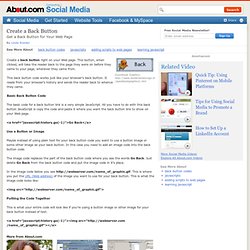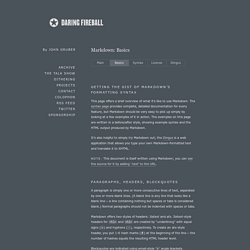

7 CSS Snippets to Borrow from HTML5 Boilerplate. The "Scavenger" series looks at large-scale projects and focuses on the small snippets you can take from the project without needing the complete project.

Starting a web application from scratch can be a boring, time-consuming task. Paul Irish's HTML5 Boilerplate project is an exceptional starting point for creating a website of any kind. HTML5 Boilerplate provides an incredibly useful set of CSS, JavaScript, image, and HTML files to help you kickstart your HTML5-powered web application. Still, HTML5 Boilerplate may be a bit more than you need if you already have a boilerplate of your own; that doesn't mean that HTML5 Boilerplate can't be useful though.
Here are 7 CSS snippets you can take from HTML5 Boilterplate and incorporate in your own application. html Many developers forget about the HTML tag when it comes to styling their app, but styling the HTML tag can be one of the most important. ::selection I shared this one a long time ago, but I want to point it out again: .visuallyhidden. Simple Website Layout Tutorial Using HTML 5 and CSS 3. Simple Website Layout Tutorial Using HTML 5 and CSS 3 As most of us know HTML 5 has created a big buzz on internet and is sure to give Adobe a hard time.

Apple believes that HTML5 is what will define the web and would love to see more developers adopt it instead of Flash. Now that big video sites such as YouTube are testing support for HTML5 (Mashable). HTML 5 is a breakthrough which will improve the sites from design view point, seo etc. It when combined with css3 can make amazing web sites. The Most prominent additions in HTML 5 are tags like <header>, <footer>, <aside>, <nav>, <audio> etc. <header> = Header (Head area of the site)<nav> = Navigation (Menu/Navigation Area)<footer> = Footer Area<aside> = An area on a side (Side Bar) We will make a very very Simple web page with HTML 5 and styling with CSS 3.
Demo and Source: View Demo Download this Freebie. Create a Back Button - Get a Back Button for Your Web Page. Create a back button right on your Web page.

This button, when clicked, will take the reader back to the page they were on before they came to your page, wherever they came from. This back button code works just like your browser's back button. It reads from your browser's history and sends the reader back to whence they came. The Big Badass List of Twitter Bootstrap Resources. Markdown Basics. Getting the Gist of Markdown’s Formatting Syntax This page offers a brief overview of what it’s like to use Markdown.

The syntax page provides complete, detailed documentation for every feature, but Markdown should be very easy to pick up simply by looking at a few examples of it in action. The examples on this page are written in a before/after style, showing example syntax and the HTML output produced by Markdown. It’s also helpful to simply try Markdown out; the Dingus is a web application that allows you type your own Markdown-formatted text and translate it to XHTML. Note: This document is itself written using Markdown; you can see the source for it by adding ‘.text’ to the URL. Paragraphs, Headers, Blockquotes A paragraph is simply one or more consecutive lines of text, separated by one or more blank lines. Markdown offers two styles of headers: Setext and atx. Blockquotes are indicated using email-style ‘>’ angle brackets. Markdown: Output: Phrase Emphasis Lists * Candy. * Gum. * Booze. !
! Your CMS Is Not Your Web Site. A content management system is a centralized repository for your content.

A Web site is a composite of decentralized fragments that are assembled on the edge, in just-in-time fashion as the content is being delivered to users. If it's not a Web site, what does a CMS do? First and foremost, the job of a CMS is (not surprisingly) to manage your content. It keeps content in raw form, separate from the presentation layer in which it eventually should appear. A CMS also allows you to deliver content in multiple formats, such as JSON, RSS and Atom feeds.
As is often the case with PHP content management systems, such as Drupal and WordPress, the CMS can output content via a Web server. So What Is a Web Site? Broadly speaking, a Web site is a collection of HTML documents that interlink to other pages that let users easily load related documents. In the end, a Web site is that huge abstract thing users see and interact with when they put your URL in their browsers and something comes back.
About Jason and kottke.org (kottke.org)
Social Networking. Wordpress. Blogging. Make a homepage in minutes.